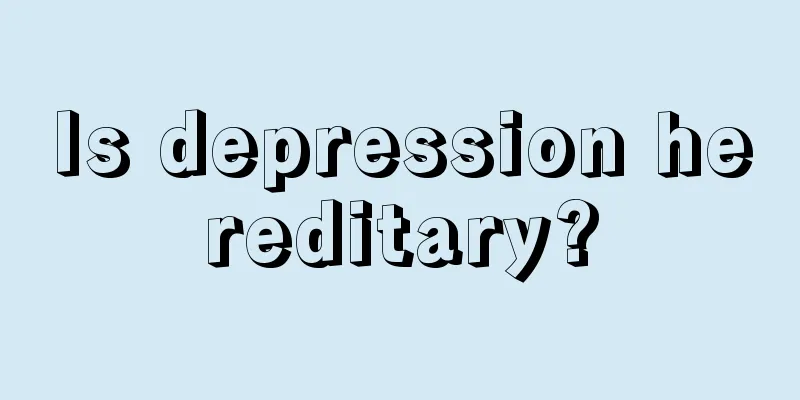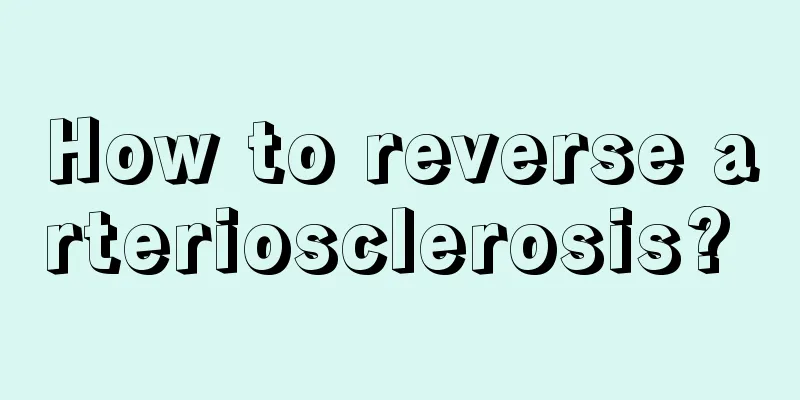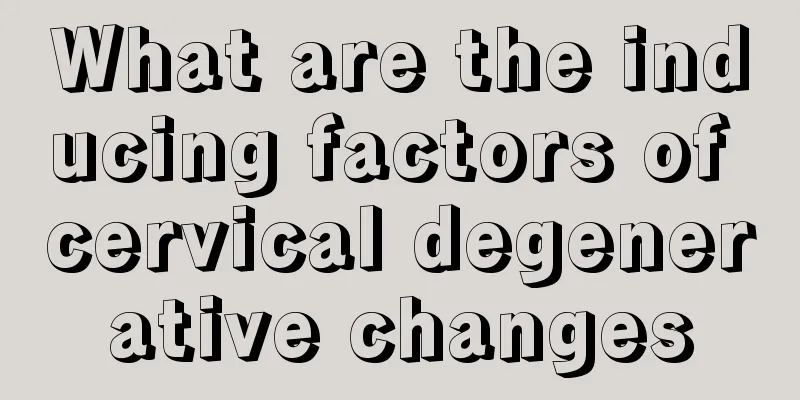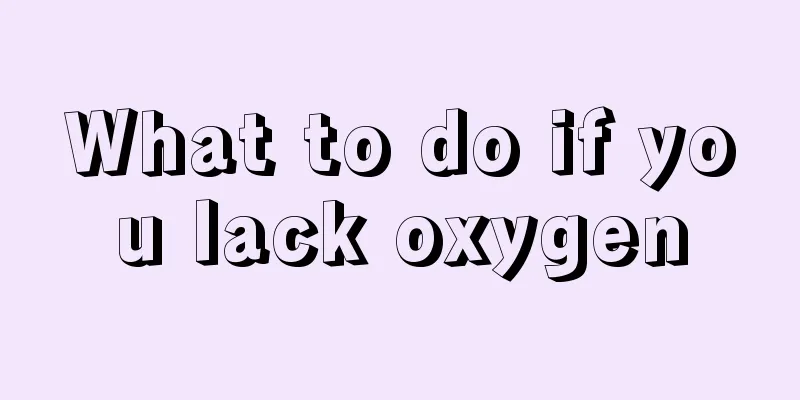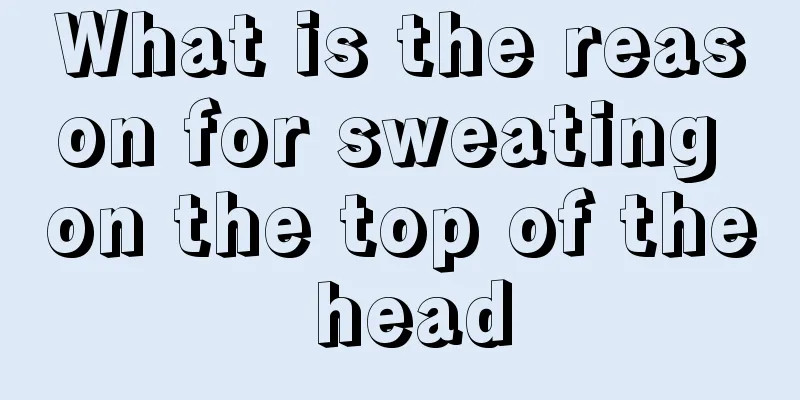How children with cerebral palsy behave when they grow up
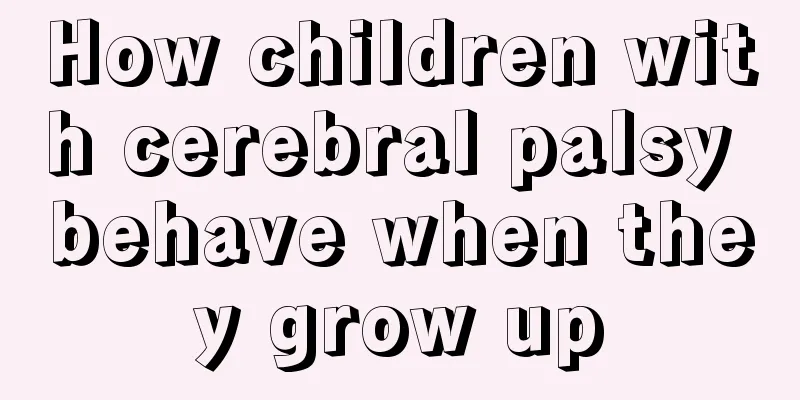
|
Children with cerebral palsy will gradually show some symptoms as they grow and develop. For example, the child's posture is abnormal and they often have a scissor-like gait. In addition, the child's reflexes will also be abnormal and the motor nerves will be delayed. Some children with more serious problems will also show delayed growth and development, and may even lead to mental retardation and language disorders, etc., which will have a great impact on the child's future. What happens when children with cerebral palsy grow up? 1. Abnormal posture is related to abnormal muscle tone and delayed disappearance of primitive reflexes, and the fingers are flexed and clenched into fists. The toes touch the ground when standing and the heels touch the ground when walking, forming a scissor-like gait. 2. Abnormal reflexes are often manifested as delayed disappearance of primitive reflexes such as foraging and sucking, and weakening or delayed appearance of protective reflexes such as hugging. But spastic babies have active or hyperactive deep reflexes. 3. Motor development is delayed, active movements are reduced, motor ability is lower than normal babies of the same age, and motor self-control ability is poor. In mild cases, the hands and feet just appear inflexible or clumsy. In severe cases, the child is unable to lift his head, turn over, sit, stand or walk. The motor development of the limbs is underdeveloped, autonomous movement is difficult, and the movements are stiff, uncoordinated and asymmetrical. The child also has abnormal movement patterns and involuntary movements. 4. Abnormal muscle tension: Muscle tension increases rapidly, hands and feet twitch involuntarily, jaws are clenched, etc. People with hypotonia are often a transitional form of other types of cerebral palsy at a certain age. In addition, they often suffer from intellectual disability, vision, hearing, language, and emotional disorders. What should I do when my child grows up with cerebral palsy? 1. The training of children with cerebral palsy is to give them different stimuli to make them respond. This kind of training must be carried out individually. The training can be spread out in different time periods through daily life. During the training, try to make the children happy as much as possible and never force them. Initial intervention methods include those used at home and in group settings. 2. The behavioral areas for early intervention in children with cerebral palsy include gross motor skills, fine motor skills, language, cognitive abilities, and social behavior. Gross movements refer to posture or whole-body activities, including lying on one's stomach, raising one's head, sitting, crawling, standing, walking, running, etc. Fine motor skills mainly refer to the movements of the hands and fingers, including grasping, pinching and some simple hand-eye coordination skills. 3. Education of children with cerebral palsy. The intelligence level of children with cerebral palsy may be lower than normal due to brain damage, motor limitation, psychological and behavioral abnormalities, complications and social factors. Therefore, it is also recommended that the education of children with cerebral palsy should be started at an early stage. The purpose of education is to cultivate basic skills and learning and living abilities, good ideological and moral qualities, strong social adaptability, and improve cultural accomplishment and knowledge levels. 4. Language training for children with cerebral palsy includes facial expressions, pronunciation, speaking and understanding of language. Cognitive ability refers to adaptive behavior, including perception, manipulation of objects, hand-eye coordination, use of simple tools, and simple problem solving. Social behavior refers to a child's ability to take care of himself and interact with others, including eating, drinking, dressing, undressing, putting on and taking off a hat, putting on and taking off shoes, and going to the toilet by himself. |
<<: Three elements for diagnosing cerebral palsy
>>: Can I still get pregnant after taking the contraceptive pill?
Recommend
Sequelae of cardiac interventional surgery
In today's life, we often see some people suf...
The best colon cancer hospital in the country
Which are the best colorectal cancer hospitals in...
What to do if the veins in the lower extremities are dilated
Special attention should be paid to the treatment...
How long can you live with mid-stage laryngeal cancer
It is not yet certain how long laryngeal cancer c...
Let me introduce to you the non-surgical treatment of skin cancer
Skin cancer treatments can be divided into surgic...
Benefits of brown yogurt
Yogurt is a very common thing in our daily life. ...
Calf serum deproteinized extract
Calf serum deproteinized extract is a widely used...
Symptoms of renal hypertension
Renal hypertension is a type of hypertension that...
The incubation period of pubic lice varies from person to person
Pubic lice are bred from eggs, so when you are fi...
Can kidney cancer be transmitted to others?
People's living standards have improved a lot...
The difference between Thuja and Oriental arborvitae
Thuja sutchuenensis refers to the cypress that gr...
Digestive system diseases
With the continuous development of modern industr...
How to clean wooden floors
Wooden floors are comfortable and beautiful. Deco...
What to do if you have heat stroke and feel like vomiting
In the hot summer, if people do not take proper m...
What is the diagnostic order of melanoma
Biopsy is an effective means of diagnosing malign...



